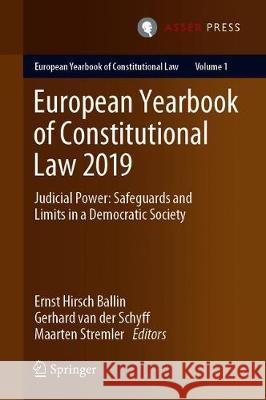European Yearbook of Constitutional Law 2019: Judicial Power: Safeguards and Limits in a Democratic Society » książka
topmenu
European Yearbook of Constitutional Law 2019: Judicial Power: Safeguards and Limits in a Democratic Society
ISBN-13: 9789462653580 / Angielski / Twarda / 2019 / 333 str.
European Yearbook of Constitutional Law 2019: Judicial Power: Safeguards and Limits in a Democratic Society
ISBN-13: 9789462653580 / Angielski / Twarda / 2019 / 333 str.
cena 726,29
(netto: 691,70 VAT: 5%)
Najniższa cena z 30 dni: 655,41
(netto: 691,70 VAT: 5%)
Najniższa cena z 30 dni: 655,41
Termin realizacji zamówienia:
ok. 22 dni roboczych
Bez gwarancji dostawy przed świętami
ok. 22 dni roboczych
Bez gwarancji dostawy przed świętami
Darmowa dostawa!
Kategorie:
Kategorie BISAC:
Wydawca:
T.M.C. Asser Press
Seria wydawnicza:
Język:
Angielski
ISBN-13:
9789462653580
Rok wydania:
2019
Wydanie:
2020
Numer serii:
000952485
Ilość stron:
333
Waga:
0.66 kg
Wymiary:
23.39 x 15.6 x 2.06
Oprawa:
Twarda
Wolumenów:
01
Dodatkowe informacje:
Wydanie ilustrowane











